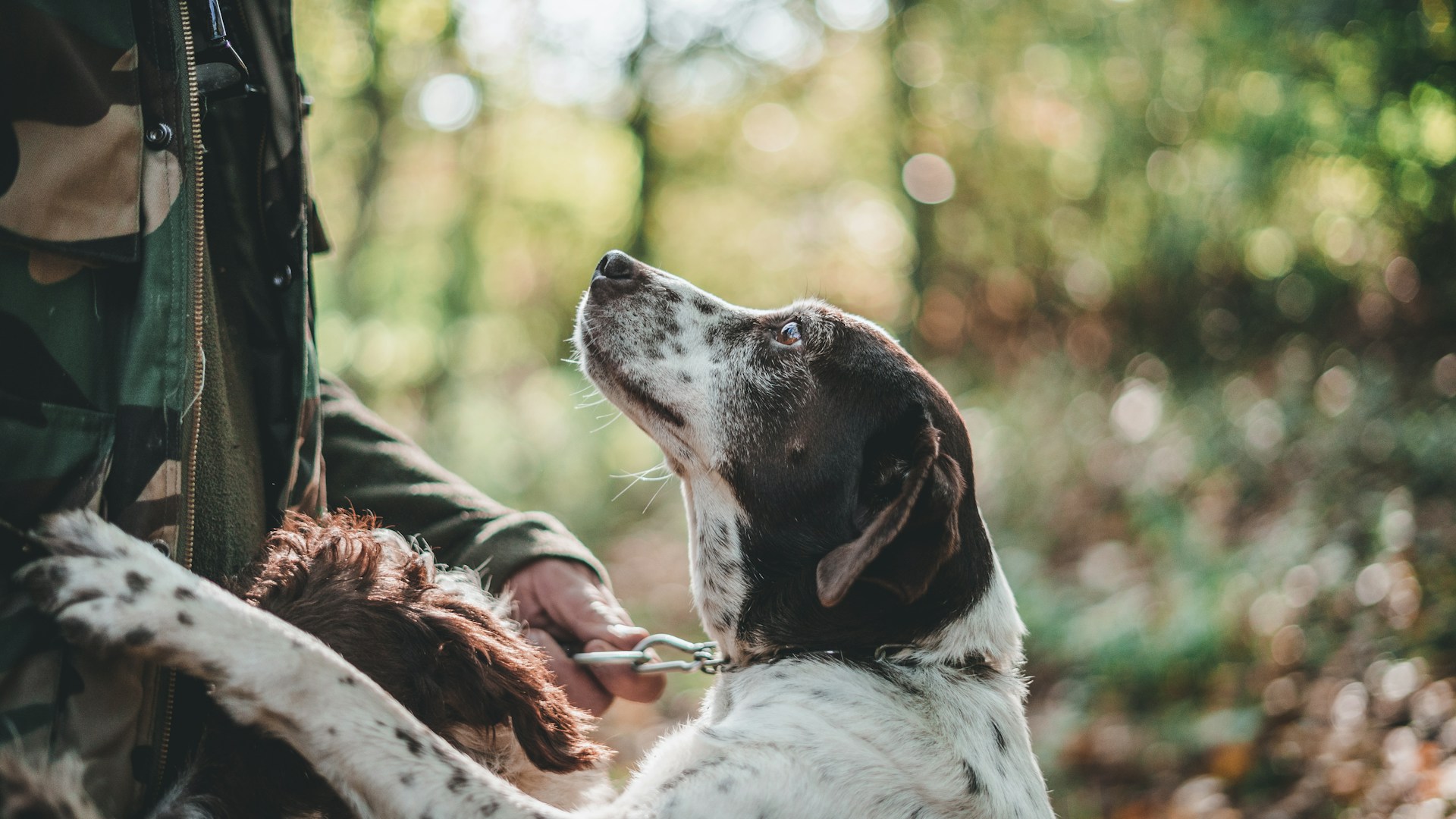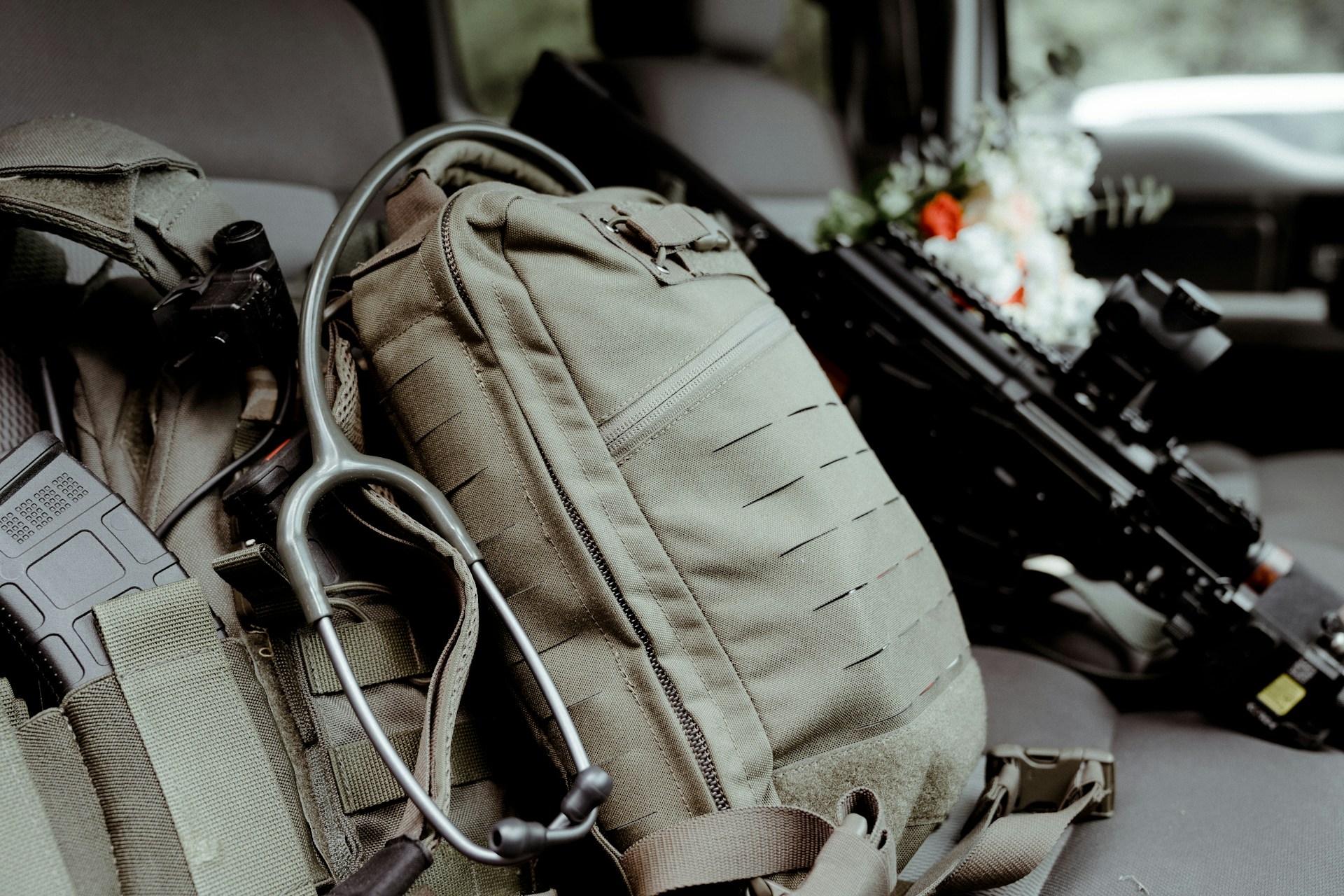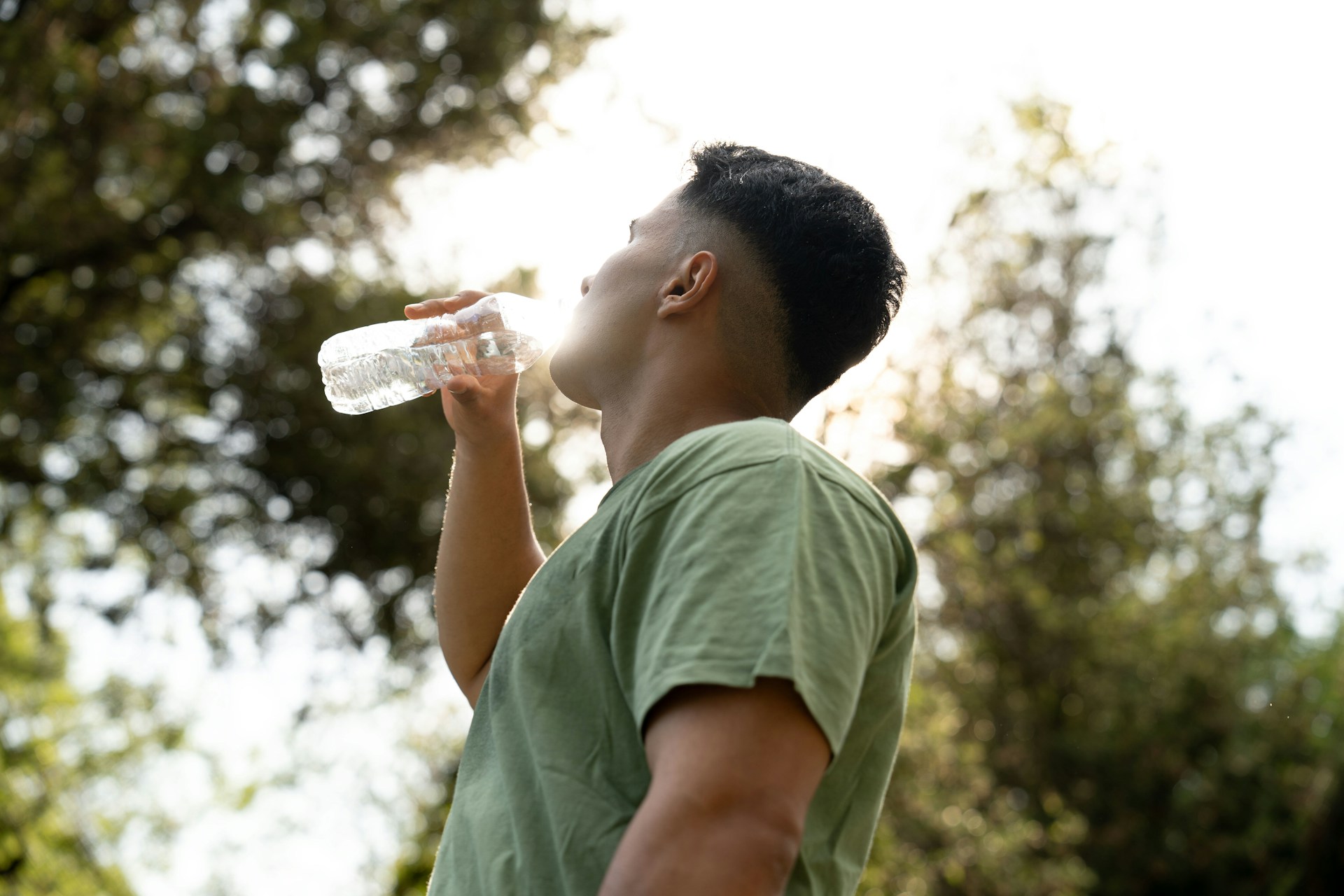Preparedness
Evacuating with Pets: Essential Tips for Prepared Gun Owners

When it comes to emergency preparedness, the safety and well-being of your pets should be a top priority. Planning for scenarios where you might need to evacuate with your furry companions is essential. Consider the duration of your evacuation: will it be just a few days, or could it be indefinite? Also, think about your mode of transportation, whether by foot, bicycle, or vehicle, and the scope of the disaster you might face.
Transporting pets safely is crucial, and while it’s possible to have them as lap animals, using carriers is the safer choice. “They are less likely to be able to dart off in all the confusion, and won’t be thrown about the cabin of your vehicle during a sudden stop.” Make sure your carriers are ready and appropriately sized. For instance, if you have a large pet like a 25lb tomcat, a standard carrier might not suffice. The last thing you want is to discover that your pet doesn’t fit when you have only minutes to evacuate.
When it comes to lodging, remember that not all hotels are pet-friendly, and shelters typically don’t allow pets. Having your pet in a carrier might help you persuade a hotel to accommodate you, or at least keep your pet safe in your vehicle overnight if the weather permits.
Microchipping is a reliable way to ensure your pet can be returned to you if lost. However, “having a collar and tags with current information on them is also a very good idea.” Additionally, keep a copy of your pet’s vaccination records handy. A digital copy stored on a platform like Google Drive and a hard copy in a waterproof pouch attached to their kennel will ensure you have access to this vital information even if the power is out.
Acclimating your pet to their carrier before an emergency can reduce anxiety. Take them on trips other than to the vet, and ensure your dogs are responsive to basic commands or at least comfortable walking on a leash.
Pet first aid is similar to human first aid, and you can find classes online or at pet stores. Your kit should include sterile gauze pads, vet wrap, and a topical antibiotic gel like Vetericyn Plus®. For pain relief, consult with your vet before administering any medication, as human pain relievers can be harmful to pets.
If you have a large dog and anticipate the possibility of evacuating on foot, consider training them to carry a pack. They can carry essentials like food, water, and a first aid kit. “Medium sized dogs can usually carry 10-12% of their weight.” Ensure the load is balanced and practice with your dog ahead of time.
For food, a medium-sized dog needs about two cups of dry food daily. In a 72-hour survival scenario, pack around 6-7 cups, which is roughly 2lbs of kibble. Lightweight collapsible dishes are ideal for serving food and water.
Evacuating with smaller animals like cats, ferrets, or small dogs requires more planning. While small dogs can walk some distance, they may tire quickly and need to be carried. Training them to ride in a front carrier can be helpful, but remember it will increase your fatigue.
In dire situations, you may face the heartbreaking decision to leave your pets behind. If this is unavoidable, do not chain them, allowing them a chance to survive independently. After the fire in Paradise, CA, “several cats were found in surprisingly good shape,” demonstrating their resilience.
For those with livestock, such as chickens or goats, having a comprehensive evacuation plan is vital. Determine how you’ll transport them and prioritize which animals to take if space is limited. Training goats to pack can be a practical solution, as they can forage along the way.
Ultimately, pre-planning and regular practice are key. Conduct evacuation drills regularly so that both you and your animals are familiar with the procedure. “I have known dogs that learned what the emergency horn meant and would run to where their packs were kept and wait to be harnessed up and taken out.” Being prepared ensures that you and your pets can evacuate swiftly and safely when every second counts.
Let us know what you think, please share your thoughts in the comments below.

Preparedness
Discover the Unexpected Joys of Being a Prepper

Reflecting on recent years, it’s clear that being a prepper has offered me a sense of gratitude and peace of mind that many may not experience. The world has faced its fair share of challenges, with disasters—both natural and man-made—making headlines frequently. The rush to stock up on essentials during lockdowns highlighted the importance of being prepared. People scrambled for items like hand sanitizer and toilet paper, leading to a surge in demand for preparedness companies.
This situation underscored a significant advantage of being a prepper: peace of mind. When chaos ensues, knowing that your family is secure and you don’t have to join the frantic crowds is invaluable. Being a prepper means embracing self-reliance in all aspects of life. There’s a unique empowerment in knowing that your family possesses basic survival skills, whether it’s changing a tire, finding water, or starting a fire.
Moreover, preppers have the opportunity to assist others. In a blackout, you might be the only one with a flashlight, or the person with the necessary multi-tool to fix something. Your first aid skills could save a life, and your situational awareness might help avoid danger.
Self-reliance also reduces anxiety and enhances problem-solving skills. While many are familiar with the ‘fight or flight’ response, there’s a third: “Fight, Flight, or Freeze.” Unfortunately, anxiety can cause some to freeze. However, practicing basic skills makes it less likely for preppers to freeze, or if they do, it’s only momentarily.
Living a prepared lifestyle means being less of a burden during crises. If more people were ready for even short durations, there would be fewer store shortages and fewer people needing rescue, allowing faster aid to those truly in need.
Additionally, prepping aligns with environmental consciousness. While I don’t consider myself an environmentalist, I do value a healthy ecosystem. I want clean rivers and lakes for fishing, uncontaminated well water, and a thriving wilderness.
Regardless of when you began your prepping journey, every skill learned and item stored contributes to better preparedness for the future. It’s a lifestyle choice that offers much to be thankful for.
Let us know what you think, please share your thoughts in the comments below.
Preparedness
Ignite the Impossible: Fire-Making Secrets for Rainy Adventures

Mastering the art of fire-making is essential for any outdoor enthusiast, but doing so in the rain requires an elevated skill set. Whether you’re an avid camper or hiker, knowing how to ignite a fire in wet conditions can be crucial. In dire situations, a fire can mean the difference between life and death, offering warmth and the ability to cook food.
The first step in starting a fire in the rain is to gather tinder. Pine needles are an excellent choice because they dry quickly. Alternatively, you can use tree bark, as it often has a dry side. It’s wise to carry your own firestarter for emergencies, but if you find yourself without one, these natural options can be lifesavers.
Next, seek out kindling and fuel wood. Search for dry wood in areas with natural cover, such as beneath a leaning rock, a fallen tree, or the lower branches of an evergreen. To ensure the wood is dry enough, test the kindling by snapping it; it should break easily. For larger branches, split them with a knife to access the dry wood inside.
Once your materials are collected, choose a location for your fire. Underneath a large tree is a good option, or you can create a makeshift shelter by stringing a tarp between trees. This will help shield your fire from the rain.
Creating a bed for your fire is essential to keep it off the wet ground. You can use tree bark or construct a bed from branches. This separation is crucial to prevent moisture from extinguishing your fire.
In wet weather, avoid digging a fire pit, as it can fill with water. Instead, build your fire on a slight mound of earth. This elevation prevents water from pooling and dousing your flames.
“Note that cutting bark from a tree should in fact only be done in an actual emergency, as this can damage and even kill the tree.” This is a vital consideration for anyone practicing survival skills in the wild.
By following these steps, you’ll be better prepared to start a fire in challenging conditions. Remember, preparedness isn’t just a hobby; it’s a way of life.
Let us know what you think, please share your thoughts in the comments below.
Preparedness
Beat the Heat Naturally: Old-School Cool Tips

As temperatures rise during the hottest months, staying comfortable without relying on air conditioning can seem daunting. However, there are several effective strategies to keep cool that have been used long before air conditioning became commonplace.
One of the simplest methods is to air out your home during the cooler evening hours. “In the evening as soon as the outside temperatures have dipped below the temp in the house open up the windows and doors and let the house air out.” If safety allows, consider leaving them open throughout the night to maximize airflow.
When morning comes, it’s crucial to close up the house to trap the cool air inside. Shut all windows and doors and draw the blinds. Incorporating blackout or heat-reflecting curtains can significantly help maintain a cooler indoor environment. Additionally, keeping interior doors to the hottest rooms closed can prevent heat from spreading.
Limiting how often you open doors during the day can also help maintain the cool air within your home. If you need to go in and out, try to use doors on the shady side of the house. This simple step can make a noticeable difference in preserving a cooler atmosphere indoors.
These tips not only help you stay comfortable during the sweltering summer months but also promote a more energy-efficient lifestyle. Whether you’re new to the concept of preparedness or an experienced prepper, these strategies can enhance your ability to manage in extreme weather conditions without relying on modern technology.
Let us know what you think, please share your thoughts in the comments below.
-

 Tactical1 year ago
Tactical1 year ago70-Year-Old Fends Off Intruder with Lead-Powered Message
-

 Tactical1 year ago
Tactical1 year agoVape Shop Employee Confronts Armed Crooks, Sends Them Running
-

 Preparedness11 months ago
Preparedness11 months agoEx-Ballerina’s Guilty Verdict Sends Tremors Through Gun-Owner Community
-

 Preparedness9 months ago
Preparedness9 months agoGood Samaritan Saves Trooper in Harrowing Interstate Confrontation
-

 Tactical1 year ago
Tactical1 year agoMidnight SUV Theft Interrupted by Armed Homeowner’s Retaliation
-

 Survival Stories2 years ago
Survival Stories2 years agoEmily’s 30-Day Experience of Being Stranded on a Desert Island
-

 Preparedness10 months ago
Preparedness10 months agoArizona Engineer’s Headless Body Found in Desert: Friend Charged
-

 Preparedness10 months ago
Preparedness10 months agoBoy Saves Dad from Bear Attack with One Perfect Shot